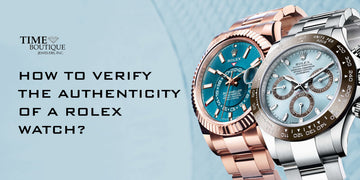
Gold Jewelry
What to know about buying gold jewelry
Gold has fascinated humanity since ancient times. The Egyptians, who were the primary consumers of gold in the ancient world, associated it with the sun and exclusively reserved its use for pharaohs.
Gold is widely loved for its long-lasting durability and diverse range of shades, making it an attractive choice for expressing personal style.
Gold Purity & Quality Marks

When it comes to jewelry, pure gold or 24-karat is too soft for practical use. To enhance its strength, gold is often alloyed with other metals. In the United States, 14-karat gold is the most popular choice for jewelry. While recent guidelines allow for the sale of gold under 10K, it's important to note that such pieces contain minimal gold and lack the durability and quality of pieces over 10K.
When buying gold, particularly from resellers, it's crucial to search for a quality mark on the gold jewelry you purchase. These marks are typically stamped or engraved with the karatage of the piece. Gold-plated jewelry is often identified by a "GP" marking.
Quality Marks on Karat Gold Jewelry
| Karatage | Karat Mark | European Mark | Percent Pure Gold |
|---|---|---|---|
| 10-Karat | 10K | 417 | 41.7% |
| 14-Karat | 14K | 585 | 58.3% |
| 18-Karat | 18K | 750 | 75.0% |
| 24-Karat | 24K | 999 | 99.99% |
The Gold Alloys
A metal alloy is a combination of two or more metals that enhances the strength and corrosion resistance of the base metal. The properties of the alloy are determined by the ratio of each component. Additionally, alloys can produce a wide range of colors.
Yellow Gold

Yellow gold is a highly sought-after metal known for its distinctive yellow color. The shade of yellow gold can vary depending on the karat and alloy combination, with some pieces displaying a vibrant yellow tone while others have a champagne-like hue. This type of gold is composed of pure gold and various metals like silver, copper, nickel, and zinc.
White Gold

White gold is a popular and cost-effective choice for white-metal enthusiasts. It is made by combining gold with nickel or palladium, zinc, and copper. Although white gold alloys aren't naturally "white," most white gold jewelry is electroplated with rhodium, a metal from the platinum group.
Over time, it's natural for white gold to fade and develop a yellowish tint as the thin rhodium coating wears off. To avoid future re-plating, consider purchasing jewelry made of platinum or palladium, which naturally have a pure white color.
FAQs
Why does white gold yellow?
It is common for white gold to eventually lose its brilliance and develop a yellowish hue. Most white gold rings are flash plated with a thin layer of rhodium, a pure white metal, to enhance their appearance and shine. However, this rhodium plating will gradually wear off, revealing the natural color of the white gold underneath. Despite the addition of other white metals like zinc and nickel, pure gold retains its inherent yellowish body color.
What is rhodium plating?
Rhodium, a silver-white metal belonging to the platinum group, possesses a remarkable quality—it does not oxidize and maintains a brilliant white appearance. To enhance the reflective and lustrous nature of gold and silver jewelry, rhodium plating is commonly applied. Specifically for white gold jewelry, a microscopic layer of rhodium is electroplated onto 14K or 18K white gold, resulting in an exquisite and enduring finish.
How do you return white gold to white?
By providing minimal maintenance, your jeweler can restore the original white shine of your white gold jewelry. Most professional jewelry stores, such as TB Jewelers, have skilled bench jewelers who can effortlessly re-plate a white gold piece with rhodium at a minimal cost. Additionally, many manufacturers offer re-plating services for the rings they sell.
How often does white gold need re-plating?
The frequency of wearing your jewelry and the environments it is exposed to can impact how often your white gold jewelry may require maintenance. It is unlikely that you will need to have your white gold jewelry re-plated for several years. However, if you notice any yellowing or fading in the white shine of your white gold rings, we invite you to visit our store, TB Jewelers, located in Miami, FL.
Rose Gold

Rose gold is gaining popularity among fine jewelry customers. This beautiful hue is achieved by mixing gold with copper. The most common type is 14-karat rose gold, consisting of 58.5% pure gold infused with copper to enhance its color.
Rose gold is available in a wide range of pink shades, making it a perfect complement to gemstone colors, white metals, and yellow metals.
Gold-Plated, Gold-Filled and Vermeil
Looking for affordable alternatives to karat gold jewelry? Consider gold-plated, gold-filled, and vermeil pieces. While they have the appearance of solid gold, their durability and value are more budget-friendly. These options are perfect for those seeking trendy pieces or looking to save money. Discover the minor differences that distinguish these gold alternatives. Find your perfect style today!
Gold-plated is an affordable option where a thin layer of gold is applied to a base metal like copper or brass through electroplating. While these pieces may tarnish quickly, their price varies based on the karatage used.
Vermeil, also known as "vermay," is a type of gold-plated jewelry. Unlike regular gold-plating, vermeil uses a high-quality silver as the base metal. True vermeil plating is at least 100 millionths of an inch thick and is 10k or higher in gold purity.
Gold-filled jewelry is crafted with a sturdy base metal, such as copper or brass, and features a generous layer of authentic gold that is heat-bonded. To ensure authenticity, a gold-filled piece must contain a minimum of 5% gold weight. Explore our exquisite collection of gold-filled jewelry, combining durability and elegance, for a timeless addition to your wardrobe.
Selling Gold Jewelry
Gold jewelry can become the ultimate family heirloom. However, unlike other items in our fast-fashion society, even broken or outdated gold jewelry doesn’t need to be tossed away. With one trip to TB Jewelers store, you can learn about your jewelry’s trade-in or sell value. Before you head out, here are some simple tips for selling your unwanted gold jewelry:
Know What You Have
When selling jewelry, it's crucial to thoroughly evaluate each piece. Many gold jewelry items hold sentimental value that often outweighs their monetary worth. Take the time to assess and understand the emotional and financial aspects before making a decision.
When purchasing gold jewelry, the price is determined by various factors such as the karatage, craftsmanship, and weight. It is important to understand the type of jewelry you have to manage your expectations effectively. Pure gold is rarely used in jewelry; instead, it is typically made with 10, 14, or 18-karat gold, which consists of gold and other alloys. When selling your gold, you will be paid based on the weight of the pure gold. Gain a better understanding of gold jewelry pricing and selling process.

Designer jewelry and unique vintage pieces can hold greater value compared to non-designer alternatives. If you possess antique or intricately crafted jewelry, it is advisable to seek an appraisal before selling to a buyer who values based on weight.
Shop Around
Before finalizing a buyer, make sure to obtain quotes from multiple companies. The offers you receive may vary significantly depending on the selling platform you choose. Compare and choose wisely to get the best deal for your needs.
Protect Yourself
Before entrusting your jewelry to a potential buyer, it is advisable to document and photograph the pieces. Additionally, obtaining an itemized receipt for the items left behind is essential. If the value of your jewelry is significant, it is recommended to obtain an appraisal beforehand.
Selling gold jewelry may not make you wealthy, but it can help you earn some extra cash. Keep in mind that the amount you receive will be based on the gold content of your jewelry, after deducting the necessary refining fees.




